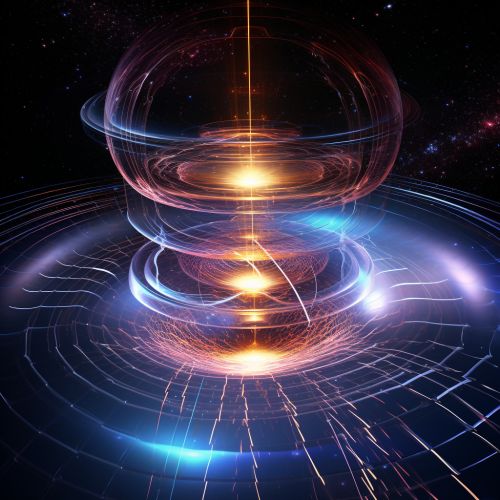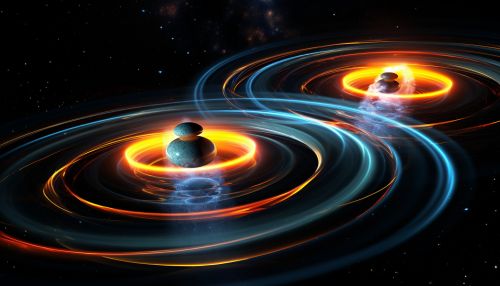Electroweak Theory
Introduction
The Electroweak Theory is a fundamental concept in Particle Physics that describes the unification of two of the four known fundamental interactions or forces: the Electromagnetic Force and the Weak Nuclear Force. This theory is a crucial component of the Standard Model of particle physics, which provides a comprehensive framework for understanding the basic building blocks of the universe.
Historical Background
The Electroweak Theory was first proposed in the mid-20th century by physicists Sheldon Glashow, Abdus Salam, and Steven Weinberg. Their work, which culminated in the formulation of the Electroweak Theory, was recognized with the Nobel Prize in Physics in 1979.
Fundamental Concepts
The Electroweak Theory is based on the concept of Gauge Invariance, a principle that states that the laws of physics should remain the same under certain transformations. In the context of the Electroweak Theory, gauge invariance implies that the electromagnetic and weak nuclear forces are aspects of a single, unified force.
Electromagnetic Force
The Electromagnetic Force is one of the four fundamental forces and is responsible for the interactions between charged particles. It is described by Quantum Electrodynamics (QED), a quantum field theory that treats electromagnetism as the exchange of virtual photons between charged particles.
Weak Nuclear Force
The Weak Nuclear Force, also known as the weak interaction, is responsible for certain types of radioactive decay, such as Beta Decay. It is mediated by three particles known as the W+, W-, and Z bosons.
Unification of Forces
The Electroweak Theory unifies the electromagnetic and weak nuclear forces by treating them as different aspects of a single force. This unification is made possible by the Higgs Mechanism, a process that gives particles their mass.
Higgs Mechanism
The Higgs Mechanism is a process by which gauge bosons acquire mass. It involves the interaction of particles with the Higgs Field, a scalar field that permeates all of space. The interaction with the Higgs Field gives particles their mass, allowing for the unification of the electromagnetic and weak nuclear forces.
Experimental Verification
The Electroweak Theory has been experimentally verified through a number of high-energy experiments, most notably the discovery of the W and Z bosons at the CERN in the 1980s and the discovery of the Higgs boson in 2012.
Implications and Applications
The Electroweak Theory has far-reaching implications for our understanding of the universe. It is a crucial component of the Standard Model of particle physics, which describes the fundamental particles and their interactions. The theory also has potential applications in the field of Quantum Computing and Particle Accelerators.
See Also


